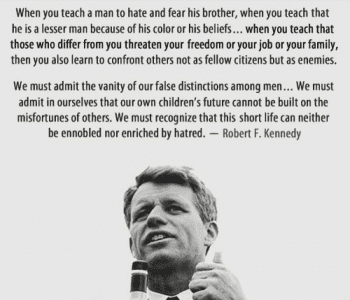4th June, 2018
Guest writer for Wake Up World
Yes, I know… The title of this article is a paradox. But since I am capable of holding multiple perspectives at the same time, I’m perfectly fine with it, especially for the purposes of this article.
The Shadow In America: Reclaiming the Soul of a Nation was first published in 1994. Compiled by Jeremiah Abrams with a foreword by Thomas Moore, and with contributions by Abrams, Jacquelyn Small, Aaron Kipnis, Robert Bly, and others, it presented an optimistic view of the firm ground needed to strip away the darkness that hides the soul of the U.S. nation: racism.
Twenty-plus years later that optimistic view and the dream of unity has been stripped away and replaced by the original sin of “separation,” the polar opposite views of American Exceptionalism, increasing intolerance against anyone deemed an “other,” not like us, and fear of “those people.”
When did we become such cowards?
It’s easy to blame the racist rants of leaders who loudly denigrate the “others”, but if leaders weren’t supported by a large number of people, they wouldn’t be able to get away with it. A leader and a large number of people and their shadow/hatred/fear of the “other” — spurred on by the silence of those may not agree but are afraid to speak up — encourage their hatred to feed upon one another.
Is America standing on the precipice of a new civil war, or are we witnessing the death throes of the hatred-based systems of white supremacists, white nationalists, and neo-Nazis?
Charlottesville: A Barometer of U.S. Racism
In 2014, America’s Southern Poverty Center said the number of hate groups in the U.S. was up from 602 in the year 2000, to more than 930 at the end of 2014. Today the SPLC tracks more than 1,600 extremist groups in the country. One such group is ‘Unite the Right’.
Nathan Damigo, the organizer of the ‘Unite the Right’ rally in Charlottesville last August, said the rally was intended to unify the white nationalist movement in the United States. The protesters marching included white supremacists, white nationalists, neo-Confederates, Klansmen, neo-Nazis, and various militias, some of whom chanted racist and antisemitic slogans, and carried semi-automatic weapons, swastikas, Confederate battle flags, and both anti-Muslim and anti-Jewish banners. The event turned violent after protesters clashed with counter-protesters, killing 3 people and injuring over 30.
U.S. President Donald Trump’s statement following the event received significant attention and were viewed by many to be sympathetic to white supremacists.
Trump: What about the alt-left that came charging at the — as you say, the alt-right? Do they have any semblance of guilt? … They had some rough, bad people, neo-Nazis, white nationalists, whatever you want to call them. But … they had a permit. The other group didn’t have a permit.
Question: Mr. President, are you putting what you’re calling the “alt-left” and white supremacists on the same moral plane?
Trump: I’m not putting anybody on a moral plane. … I do think there’s blame — yes, I think there’s blame on both sides.
— from Donald Trump’s press conference on the 2017 Charlottesville riots
While an NBC Political Unit Poll on August 21, 2017 — taken a week after his speech on the Charlottesville riots — showed President Donald Trump’s overall poll numbers slipping, again, what was particularly disturbing in the state-by-state polls was the percentage of Americans who approved of his job rating following these remarks, ranging from 25 to 56 percent.
From a September 2017 report from morningconsult.com:
The president retained support from a majority of voters in 16 states in September, all of which he carried in 2016. Trump is most popular in Wyoming, where 60 percent of Cowboy State constituents said they approved of his job performance as of September, followed by West Virginia, where 59 percent of Mountain State voters approved. Trump’s approval in the Deep South is highest in Alabama, at 59 percent, while 57 percent of Louisianans, 54 percent of Arkansans, 53 percent of Tennesseans and 51 percent of South Carolinians are still in his corner.
As we look today at a president who offered the support of the abominable ‘free speech’ rhetoric to those who were again inciting racial violence and urging the extinction of Jews, one cannot help but remember the words spoken by Joseph Nye Welch to Senator Joe McCarthy in 1954:
Have you no sense of decency, sir? At long last, have you left no sense of decency?
Why Are We Tolerating Intolerance?
Trump said – not once, but twice – that both sides were to blame for the violence at Charlottesville that led a white nationalist to plow his car into a crowd of counter-protesters, killing Heather Heyer — and the poll numbers were even more disturbing. While 55 percent of voters disapproved of Trump’s response, an astonishing 34 percent of those voters approved.
What can we extrapolate from the 34 percent approval rating of his statement?
It is not a stretch to assume that 34% — or one third — of voters are, at some level, sympathetic to the white supremacist/neo-Nazi/white nationalist position. Could it be true that, in the 21st Century, one-third of voting adults in the U.S. essentially support the intolerance of white supremacy?
Linguist and political scientist George Lakoff places those who believe in white power and racial superiority at 35 percent of the U.S. population. In other words, the moral universe where male-led white supremacy thrives is rooted in a soberingly significant portion of the country.
According to an article on the website AlterNet titled The Spread of White Nationalism Is Taking Our Nation into Uncharted and Dangerous Territory, it may take three or more decades for changes in American demographics to surmount this latest eruption of white supremacy, as non-whites become a majority of the U.S. population. In the meantime, with an estimated one third of our country eager to enter those uncharted and dangerous waters of white nationalism, with the apparent permission of the President of the United States no less, we are witnessing an unraveling — and it’s only beginning.
A deeper look into these demographics of racism and authoritarianism reveals how a global rise in authoritarian leadership is all too eager to promote fear of “the other” to their racist support bases. Authoritarian leaders, who may or may not be racist themselves, use their racist voter base to take more and more control.
I’m not naïve enough to think that it’s possible to completely stamp out hatred and racial intolerance, any more than it’s possible to stamp out authoritarianism, but if the majority of us want to live in a better world, then we have no choice but to make intolerance intolerable, and we need to start now… and that includes the indigenous genocide over the founding of this country.
Also by Gary Stamper:
- Empire Serves No One But Itself: It’s Time to Wake Up!
- The Great Disruption and the Transformation of Consciousness
- Masculinity and The End of Time
- The Lifting of The Veil
- Collapse as an Opportunity for Growth
- Creating The New Story: The Masculine And The Feminine
- Collapse and the Changing Face of Suicide
- Well… What Did You Expect?! – The Evolution of Consciousness and the Collapse of Society
About the author:
Gary Stamper is the author of Awakening the New Masculine: The Path of The Integral Warrior, and the creator of the Integral Warrior Men’s Process. Gary holds a Doctorate in Shamanic Psychospiritual Studies. He lives in North Carolina.

If you've found value in our articles, we invite you to support the release of our brand-new book, "Gratitude Practices for Kids: A Practical Guide for Adults to Instill a Spirit of Appreciation and Positivity in the Next Generation."
"Gratitude Practices for Kids" brings together over 25 innovative and accessible practices designed to enhance gratitude in everyday life. This comprehensive guide is backed by 17 scientific studies, ensuring each concept is grounded in research, underscoring our commitment to nurturing growth, emotional intelligence, and positive interactions between adults and children.
We encourage you to opt for the paperback version to celebrate this new release. Dive into its fresh pages away from digital distractions, allowing you to immerse yourself in the transformative practices it offers.
Over recent years, Wake Up World has faced significant online censorship, which has impacted our financial ability to operate. Moving into book publishing represents a strategic step to secure the ongoing funds needed to continue our mission. By purchasing Gratitude for Kids, you help us keep our content free and accessible to everyone, avoiding needing a paywall. With over 8,500 articles published in the last 13 years, we remain dedicated to keeping our valuable content open to all.








